We’ll increase conversions by
20-100+%
on your website.
Get a FREE Audit today
See how we can help your business increase conversion rates
Mastering Email Marketing: Examples And Strategies For Effective Email Campaigns
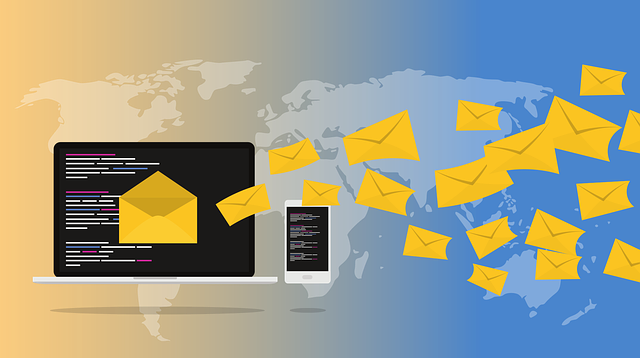
Why Use Email Marketing?
Email marketing is a tried and true method for businesses to reach their target audience. From lead nurturing to building brand loyalty, email campaigns can be tailored to achieve specific business goals.
In today’s digital age, where customers are constantly bombarded with online ads and social media posts, email marketing provides a personalized approach that cuts through the noise. In this blog post, we’ll dive into examples and strategies for creating effective email campaigns that drive engagement and lead to conversions. So if you want to learn how to master your own email marketing game, keep reading!
Understanding Email Marketing
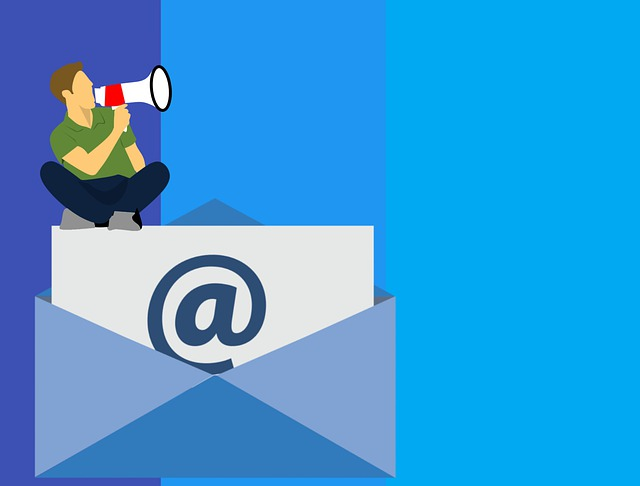
Email marketing is a powerful tool that can help businesses build relationships with customers and achieve various business goals, including lead nurturing, brand awareness, and sales.
Benefits Of Email Marketing
Email marketing is a highly effective method of communicating with customers, building brand awareness, and driving sales. It allows businesses to send targeted messages to specific groups of people based on their interests and behaviors. With email marketing, companies can nurture leads by providing them with valuable information that helps guide them through the buying process.
One major benefit of email marketing is its cost-effectiveness compared to other digital marketing strategies. According to DMA, for every $1 spent on effective email marketing campaign, there is an expected average return of $42. In addition, email campaigns offer high engagement rates since they are delivered directly to subscribers’ inboxes where they have more control over what messages get their attention.
Another advantage of email marketing is the ability to track and analyze results easily. Through metrics such as open rates, click-through rates, and conversion rates; marketers can understand how well their campaigns perform and make data-driven improvements accordingly. Additionally, personalization techniques help businesses engage users with relevant content that builds brand loyalty while reducing spam complaints – which improves inbox space retention rate significantly among potential customers or readers alike!
Different Types Of Email Marketing Campaigns
There are several types of email marketing campaigns that businesses can use to engage with their subscribers. One popular type is the a promotional email campaign, which includes discounts, sales, and special offers to encourage purchases. Another type is the informational campaign, which provides valuable information about a company’s products or services without pushing for a sale.
Welcome emails are also effective in introducing new subscribers to a business and building trust with them. Additionally, engagement campaigns aim to retain customers re-engage inactive subscribers by sending relevant content and promotions based on their past interactions with the brand. Segmentation is key in creating effective email campaigns as it allows businesses to personalize content for specific audience segments and increase conversions.
Crafting Effective Email Content
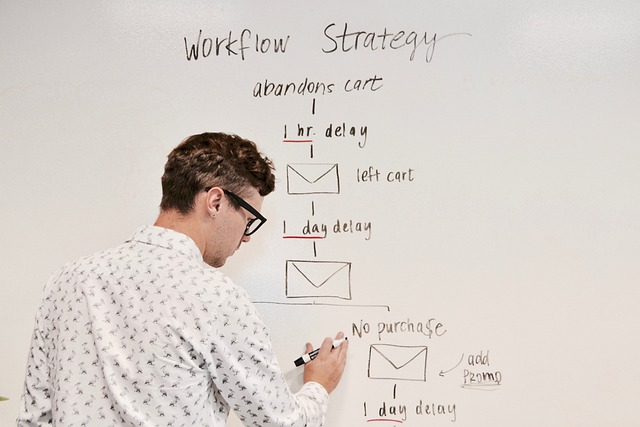
Crafting effective email content is crucial to the success of any email marketing campaign. Learn how to write compelling subject lines, personalize your messages, optimize for mobile devices and include clear CTAs to ensure your emails cut through busy inboxes and engage your subscribers. Read on to discover more tips for creating successful email campaigns.
Writing Compelling Subject Lines
The subject line of an email is the first thing a recipient sees and can determine whether they will open it or not. To make sure your emails stand out in busy inboxes, use eye-catching subject lines that grab the reader’s attention. In fact, 47% of email recipients decide to open an email based on its subject line alone.
Avoid using generic phrases such as “Newsletter” or “Special Offer” and instead craft personalized subject lines that are relevant to the content inside welcome email. Personalized subject lines have been shown to increase open rates by 50%. Keep in mind that mobile optimization is also crucial since over half of all emails are opened on mobile devices. A concise yet catchy subject line can entice subscribers to click through and engage with your brand further.
Personalization Techniques
Personalization is a crucial aspect of email marketing that can help businesses build and maintain strong relationships with their subscribers. By addressing recipients by name, segmenting emails based on interests or behavior, and tailoring content to individual preferences, companies can create more engaging and relevant messages. According to HubSpot Blog, personalized emails have an average open rate of 18.8%, compared to non-personalized ones which only have a 13.1% open rate.
Another effective personalization technique is using dynamic content to display specific information based on the recipient’s location or past interactions with the company. For example, Amazon sends customized product recommendations tailored to the customer’s browsing history and purchase behavior. This hyper-personalized approach has helped them achieve high levels of customer loyalty and repeat business. With tools like comprehensive email builders and marketing automation platforms available today, personalizing your campaigns has never been easier!
Including Clear And Actionable CTAs
CTAs or Call-to-Actions are essential in email marketing campaigns because they persuade subscribers to perform a desired action. A clear and compelling CTA increases the chances of conversions, such as clicks, sign-ups, and purchases. It’s important to create CTAs that align with the goals of your email marketing campaign example and ensure they are visible and easy to click on.
To make sure your CTAs stand out in crowded inboxes, use bright colors and large buttons that contrast with the background of your emails. You can also add urgency by using phrases like “limited time offer” or “act now.” Remember to test different types of CTAs through A/B testing tools to determine what works best for you.
Overall, having clear and actionable CTAs can increase engagement rates and lead to more successful email marketing campaigns. As always, it’s important to track these metrics along the way so you can continue optimizing your strategy over time.
Optimizing For Mobile Devices
In today’s digital age, optimizing for mobile devices is crucial for email marketing success. With over 60% of emails being opened on mobile devices, it’s essential to ensure that your emails are designed with mobile in mind. This means creating responsive and visually appealing emails that can be easily read on small screens.
To optimize for mobile, keep your subject lines short and eye-catching, so they don’t get cut off on smaller screens. Additionally, prioritize the most important information at the top of your email so readers don’t have to scroll down. Use a clean design with easy-to-read fonts and include clear calls-to-action (CTAs) that are easy to click on using touchscreen technology.
By taking these steps to optimize for mobile devices, you can increase open rates and engagement with your audience while delivering a seamless experience across multiple devices. Remember that creating engaging content for all users—including those reading on their phones or tablets—can help boost your email marketing campaign’s overall effectiveness.
Successful Email Marketing Campaign Examples
Highlighting successful email marketing campaigns can provide valuable insights into effective strategies used by top companies.
Personalized Recommendations (Airbnb)

Airbnb is a great example of using personalized recommendations in email marketing campaigns. The company sends emails to subscribers with personalized travel recommendations based on their previous searches and bookings. This approach not only provides relevant content but also encourages repeat business.
The use of purchase history in email marketing can be a powerful tool for companies to engage customers and increase revenue. Airbnb sends follow-up emails after users book accommodations, offering recommendations for nearby activities or restaurants based on their location and preferences, which can lead to additional bookings and generate sales by introducing them to new experiences they might not have considered otherwise.
Referral Program (Dropbox)
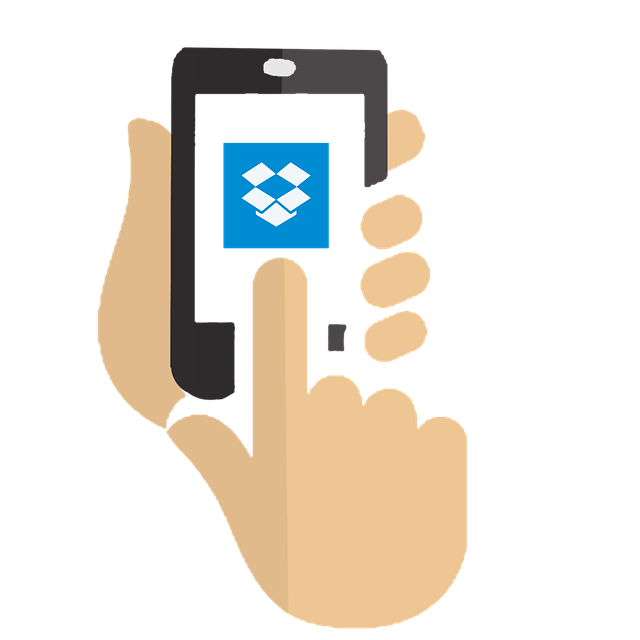
Dropbox’s referral program is a great example of successful email marketing. The company incentivizes existing users to invite friends and colleagues to sign up for the service with the promise of free additional storage space. This tactic not only increases user engagement but also helps Dropbox acquire new customers through word-of-mouth marketing.
By encouraging users to share their experience with others, Dropbox leverages the power of its loyal customer base to generate new business opportunities. This referral program has been effective in driving growth, as it helped Dropbox gain 4 million users in just 15 months. As such, businesses can learn from Dropbox by creating similar referral programs that leverage the influence of existing customers effectively while offering incentives for them and their networks.
Seasonal Promotions (Starbucks)

Starbucks is a prime example of how to use seasonal promotions in email marketing. The company sends out emails announcing limited edition drinks and treats during specific seasons that keep customers returning. By creating scarcity around particular products, Starbucks can generate excitement and urgency among its audience.
During the fall season, for instance, Starbucks promotes their famous pumpkin spice latte through email campaigns. This promotion creates a sense of exclusivity as it only comes around once a year. Starbucks also uses visually appealing images in their campaigns accompanied by clever copy aimed at capturing the reader’s attention and making them crave that special drink or treat. These tactics help make the brand stand out from competitors while strengthening customer loyalty with each passing season.
User Engagement Emails (Grammarly)

Grammarly, an online writing assistant tool, is known for their user engagement emails. They send out weekly reports to users with stats on productivity, accuracy and vocabulary usage. These personalized insights keep users engaged and motivated in achieving writing goals.
In addition to weekly reports, Grammarly uses clever copywriting to encourage users to upgrade to their premium versions. By highlighting the benefits of features that aren’t available in the free version and creating a sense of urgency through limited time offers or discounts, they effectively persuade readers to convert into paying customers.
Overall, Grammarly’s user engagement emails demonstrate how personalization and persuasive email copy can create a positive relationship with subscribers while driving revenue for the company.
Impact Story Emails (Charity: Water)

Impact story emails are a powerful tool to connect with subscribers emotionally and inspire them to take action. Charity: Water, a non-profit organization that provides clean water access to people in developing countries, is an excellent example of using impact stories in email marketing campaigns. Their emails feature real-life case studies showing how their work has positively impacted individuals and communities, which makes readers feel connected to the cause.
Charity: Water’s emails also include calls-to-action that encourage subscribers to donate, share their story or sign up for monthly donations. Besides generating funds for the organization, these CTAs motivate readers by providing them with simple ways they can make a difference. By sharing success stories about the lives they’ve changed through their efforts, Charity: Water has been able to create strong emotional connections with its audience while effectively communicating its mission and goals.
Email Design And Layout
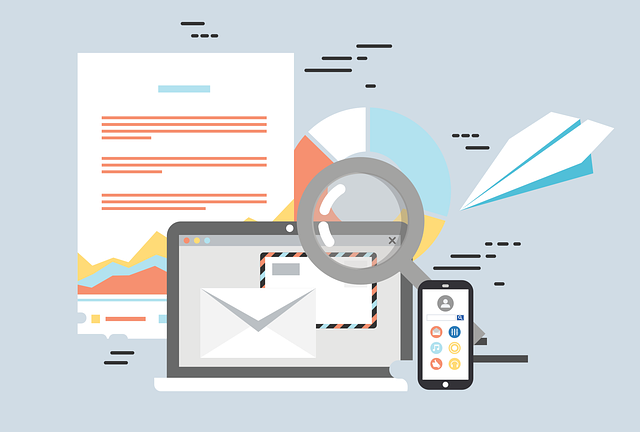
Keeping emails visually appealing is crucial for engaging users and conveying information effectively, so incorporating visuals and multimedia is a must.
Keeping Emails Visually Appealing
Visual design is one of the most crucial aspects of email marketing. A visually appealing email can grab the reader’s attention and make them more likely to engage with your content. Using images, videos, and GIFs can help convey information more effectively, while also making your emails look more professional.
In addition to using multimedia elements, it’s essential to use a clean layout that enhances readability. This means avoiding cluttered designs with too much text or competing visuals that might overwhelm readers. Instead, use clear fonts and plenty of white space to highlight key points in your message. Remember always to optimize your emails for mobile devices because many people open emails on their phones nowadays.[IMPORTANT FACTS: 6]
Using Visuals And Multimedia
Visuals and multimedia can significantly enhance the effectiveness of email marketing campaigns. Including relevant images, videos or GIFs can make emails more engaging, informative, and visually appealing to readers. In fact, statistics show that emails with multimedia content have a higher click-through rate than those without (source: HubSpot Blog).
When using visuals in emails, it’s important to optimize them for different devices and ensure they don’t take too long to load. High-quality images should be compressed for faster loading times on mobile phones and other devices. Using relevant visuals that match the message of the email is also crucial as irrelevant imagery may confuse or disengage the reader.
Incorporating social media links alongside visual content is another way to boost engagement rates in email marketing campaigns. This allows subscribers to quickly share your brand’s messaging with friends and followers on their social media channels – potentially expanding your reach beyond your immediate audience (source: Neil Patel).
Incorporating Social Media Links
Incorporating social media links into your email campaigns can effectively improve engagement and increase brand awareness. By adding clickable buttons or icons that lead to your company’s social media pages in automated emails, you’re providing subscribers with additional platforms to interact with your brand. Plus, it’s a great way to grow your following on other digital channels.
Including social media links in emails also allows you to further promote specific products or services through user-generated content (UGC). If customers share their positive experiences using your company’s offerings on their own social media platforms, you can then highlight those UGC posts in future email campaigns. This not only shows appreciation for loyal customers but also encourages more users to engage with and potentially purchase from the business.
Segmentation Techniques
Segmentation is the key to creating highly effective email marketing campaigns. It involves categorizing email subscribers based on specific characteristics such as demographics, behavior, purchase history, and interests. By segmenting your email list, you can create targeted messages that resonate with each audience group.
One of the best segmentation techniques is behavioral segmentation which involves analyzing a subscriber’s interaction with your website or previous emails. This data helps you send personalized content based on their preferences and engagement level. Another effective technique is demographic segmentation where you categorize subscribers based on age, location, income level, etc., allowing for more relevant messaging to be sent to each group. With these techniques in mind, businesses can improve open rates and click-through rates while reducing unsubscribes and churn rate over time.
A/B Testing Different Designs And Templates
A/B testing is a crucial aspect of email marketing campaigns. It involves experimenting with different designs and templates to see which ones generate better results with subscribers. By creating multiple versions of an email with slight variations in design elements, such as subject lines or call-to-action buttons, businesses can determine what works best for their target audience.
Testing different designs and email templates helps companies know what their subscribers prefer and respond positively to, ultimately improving the effectiveness of their email marketing campaign. For example, A/B testing can help identify the most engaging visuals to use or copywriting techniques that resonate well with readers. With this information at hand, businesses can create more successful emails tailored to specific customer segments and drive greater engagement rates.
Building And Maintaining An Email List

This section will discuss strategies for building a subscriber list and maintaining high-quality email lists, including the importance of opt-in forms and regularly cleaning out inactive or bounced emails.
Strategies For Building A Subscriber List
One effective strategy for building a subscriber list is to offer valuable content or resources in exchange for email addresses. This can be anything from e-books and whitepapers to webinars and exclusive discounts. By providing something of value, businesses can entice potential subscribers to sign up for their email list.
Another tactic is to optimize website forms and landing pages for lead capture. This includes creating clear and compelling calls-to-action (CTAs), minimizing form fields, and using social proof such as customer reviews or testimonials. Additionally, implementing exit-intent pop-ups that offer a discount code or other incentive can help convert website visitors into subscribers before they leave the site.
Maintaining High-quality Email Lists
Maintaining high-quality email lists is crucial for successful email marketing campaigns. It’s important to regularly review and clean up your email subscriber list by removing inactive subscribers, duplicates, and invalid email addresses. This not only prevents bounce backs but also ensures that your emails are reaching a targeted audience who are more likely to engage with your content.
Another way of maintaining high-quality email lists is by getting consent from subscribers before adding them to the list. Following regulations such as GDPR and CAN-SPAM Act can help avoid legal issues and maintain trust with your subscribers. Additionally, providing an easy opt-out option can reduce the number of spam complaints which in turn increases deliverability rates and saves inbox space for future emails.
Measuring And Analyzing Email Marketing Results
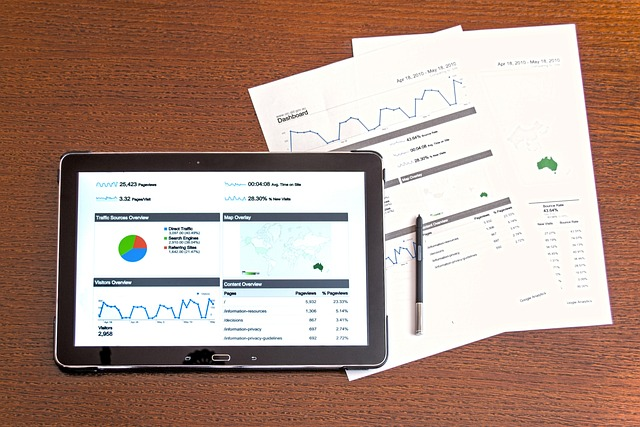
Measuring and analyzing email marketing results is essential to determine the effectiveness of your effective marketing campaign. By tracking email open rates, click-through rates, conversion rates, and interpreting data, you can make necessary improvements that lead to better engagement with your audience. Read on to discover more best practices and tools for mastering email marketing.
Email Open Rates
Email open rates refer to the percentage of emails that recipients opened from the total number of emails delivered in a campaign. A high open rate indicates that people found your email subject line and sender name compelling enough to click and read more. The average email open rate across industries is 17.8%, according to Campaign Monitor’s research.
It’s important to track your email open rates regularly, as they can provide insights into how well your list segmentation, targeting, and messaging strategies are working. Factors such as time of day, day of the week, subject lines length, personalization techniques, and sender name can affect email open rates. Experimenting with these variables via A/B testing can help you identify what works best for your audience and improve future campaigns’ performance.
Click-through Rates
Click-through rates are crucial in measuring the success of email marketing campaigns. This metric represents the percentage of recipients who clicked on a link within an email and provides valuable insight into how engaged subscribers are with your content. A high click-through rate indicates that your email content is compelling, relevant, and effective in driving traffic to your website or landing page.
To improve click-through rates, it’s essential to craft clear and actionable calls-to-action (CTAs). Your CTA should be attention-grabbing and prominently placed within the email body while being optimized for mobile devices. A/B testing different CTAs can help determine which ones resonate best with your audience. Additionally, personalization techniques such as using recipient names can create a sense of connection between subscribers and brands, leading to higher engagement levels and ultimately more clicks.
Conversion Rates
Conversion rates are a crucial metric to measure the success of email marketing campaigns. They tell you how many recipients clicked through and completed the desired action, such as making a purchase or filling out a form. A high conversion rate indicates that your email content and call-to-action (CTA) resonated with your audience.
To improve conversion rates, make sure your CTAs are clear and actionable. Use language that inspires urgency or excitement, such as “limited time offer” or “don’t miss out.” Additionally, test different elements of your emails to see what works best for your audience – this could include tweaking subject lines, changing visual design components, or adjusting messaging to be more personalized.
Remember that there is no one-size-fits-all solution for improving conversion rates in email marketing. Continuously analyze data from each campaign to identify areas of improvement and refine strategies moving forward.
Analyzing And Interpreting Data
Analyzing and interpreting data is a crucial step in measuring the success of email marketing campaigns. Email open rates, click-through rates (CTR), and conversion rates are key metrics to track. High open rates indicate that subscribers find the subject line interesting enough to open the email, while CTRs show how many people clicked on links within your emails. Conversion rates measure how well your emails achieved their goal – whether it’s making purchases or signing up for a newsletter.
Interpreting these metrics can provide insight into customer behavior and engagement levels. Analyzing data can help businesses tailor their content to their target audience’s interests and preferences, leading to more effective email campaigns. It’s important not just to collect data but also analyze it properly as it can uncover what needs improvement in current strategies while identifying areas of strengths where one should invest time and resources.[IMPORTANT FACTS]
Implementing Improvements Based On Data
After analyzing the performance of your email campaigns, it’s time to implement improvements based on data. You can adjust your subject lines, messaging tone, and call-to-actions (CTAs) to improve open rates, click-through rates (CTR), and conversions. Use A/B testing tools to compare different versions of emails to see what works best for your audience.
For instance, you may find that personalized subject lines generate higher open rates or that CTAs with urgency language lead to more clicks. Keep in mind that data analysis is an ongoing process, and you should stay up-to-date with trends and changes in consumer behavior. By continuously tweaking your strategy using data-driven insights, you can optimize the effectiveness of your email marketing campaigns over time.
Best Practices And Tools For Email Marketing

To ensure your email campaigns are successful, it’s important to follow best practices such as personalization and segmentation, timing and frequency, and tracking metrics. Utilizing email service providers, marketing automation platforms, and A/B testing tools can also improve your overall strategy. Read on for more tips on mastering email marketing!
Personalization And Segmentation
Personalization and segmentation are key tactics to make email marketing campaigns more effective. By tailoring messages to individual subscribers, businesses can increase engagement and generate higher ROI. In fact, personalized emails have been shown to deliver six times higher transaction rates than non-personalized ones.
Segmentation involves dividing a subscriber list into smaller groups based on shared characteristics such as demographics or behavior. This allows for targeted messaging that resonates with each group’s interests and needs. For example, a clothing retailer might segment its list by gender or purchase history, sending tailored promotions and product recommendations that are relevant to each subgroup. Effective segmentation requires data analysis and tracking of user behavior through metrics such as open rates and click-through rates.
Timing And Frequency
Timing and frequency are crucial components of effective email marketing campaigns. Businesses need to consider the best day and time to send their marketing emails based on their target audience’s behavior. For instance, sending promotional emails during work hours may not yield high open rates compared to sending them outside typical working hours or weekends.
Frequency is also a critical factor to keep in mind when planning email marketing campaigns. Sending too many emails can result in subscribers feeling overwhelmed, leading to increased opt-outs or marking as spam. On the other hand, failing to maintain frequent communication can lead to subscribers forgetting about the brand altogether. Finding the right balance between timing and frequency is essential for success in email marketing.[FACT]
Marketing automation platforms like Mailchimp allow businesses to schedule emails at specific times, automate follow-up messages, and track engagement metrics such as open rates and click-through rates.[FACT]
Metrics Tracking
Metrics tracking is crucial for measuring the success of email marketing campaigns. By analyzing metrics such as email open rates, click-through rates and conversion rates, businesses can gain insight into how their emails are performing and make improvements accordingly. For instance, a low open rate could mean that the subject line needs improvement or that the timing of sending emails needs to be adjusted.
Email service providers and marketing automation platforms offer in-depth insights on various metrics related to email campaign performance. Metrics like unsubscribe rate, bounce rate,and engagement rate can help businesses understand how their subscribers interact with their content to enhance future campaigns. Additionally, A/B testing tools enable businesses to test different elements of an email campaign such as subject lines or CTAs to determine which variant performs better based on key metrics data revealed through tracking.
In conclusion, tracking various parameters provides necessary information about email campaigns’ effectiveness while offering an opportunity for examination and adjustment for optimal results continually. Utilizing these insights allows brands’ efforts to remain relevant by keeping up-to-date with customer preferences resulting in higher engagement rates and boosting brand awareness ultimately. Maintaining regular analytics monitoring will provide useful customer feedback in ensuring successful mailing strategies contributing positively towards influencing potential customers’ purchasing decisions within a crowded online marketplace making robustly measured communication essential in streamlining procedures effectively yielding business growth over time
Email Service Providers
Email service providers (ESPs) are software tools that help businesses create, send and manage their email campaigns. They offer a variety of features such as email design templates, analytics dashboards, and subscriber list management. Some popular ESPs include Mailchimp, Constant Contact, and Campaign Monitor.
Choosing the right ESP is key to achieving success in email marketing campaigns. It is important to consider the pricing plans offered by various ESPs before making a decision. For example, some may charge based on the number of subscribers while others may charge based on the number of emails sent per month. Additionally, it is crucial to ensure that your chosen ESP complies with regulations like GDPR and CAN-SPAM Act so your emails can reach your target audience without legal issues or excessive spam filtering.
Marketing Automation Platforms
Marketing automation platforms are software tools that automate and streamline repetitive marketing tasks, enabling businesses to deliver personalized and timely messages to their subscribers. These platforms can help marketers enhance the effectiveness of their email campaigns by providing insights into customer behaviors and preferences.
One popular marketing automation platform is HubSpot, which offers a comprehensive suite of tools for email marketing, content creation, social media management, and more. Other examples include Mailchimp, Marketo, Pardot, and Constant Contact. Using these platforms can save time while improving the ROI on email and social media marketing efforts through targeted segmentation and automation workflows.
A/B Testing Tools
A/B testing is an important aspect of email marketing, which involves creating two or more variations of an email and sending them to a small segment of the subscriber list. A/B testing tools can help automate this process and analyze the results quickly. Some popular A/B testing tools include OptinMonster, Mailchimp, and Sendinblue.
Using these tools allows marketers to test different elements of their emails such as subject lines, CTAs, images, and layouts to determine what resonates with their audience. By analyzing data from A/B tests regularly, businesses can improve their overall email marketing strategy and increase open rates, click-through rates, and conversions. With so many A/B testing tools available in the market today it’s fairly easy for even small business owners to start (and keep) optimizing their own email campaigns regularly without extra hassle!
The Future Of Email Marketing
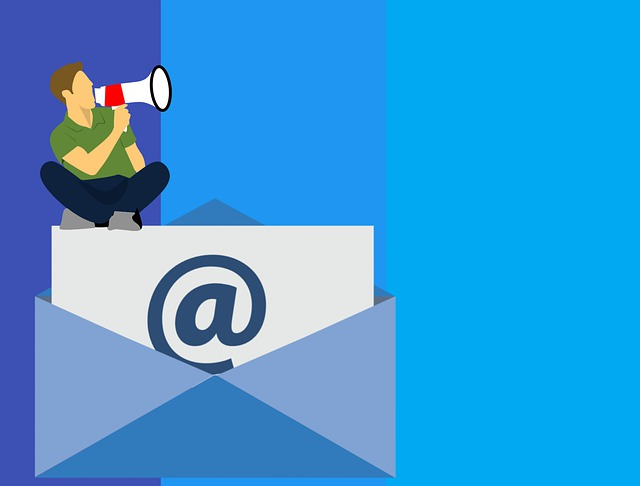
The future of email marketing looks bright, as it continues to be a popular and effective way for businesses to communicate with their customers. With advances in technology, such as AI, chatbots, and data analysis tools, email campaigns are becoming more personalized and targeted than ever before. This means that companies can send relevant messages to their audience at the right time.
Furthermore, mobile optimization will continue to be essential in the coming years. A majority of people now check their emails on smartphones or tablets instead of desktops or laptops. As a result, creating mobile-friendly designs and content is crucial for ensuring that emails are accessible and engaging across multiple devices.
Other exciting developments on the horizon include interactive elements such as GIFs, videos or quizzes which can increase engagement rates by making newsletters more immersive & fun for subscribers. The integration of social media into email marketing efforts is another trend worth following closely in upcoming years as it enables marketers to connect with users via multiple channels- maximizing brand reach and customer retention rates.
Conclusion: Mastering Email Marketing
In today’s digital age, email marketing remains a key strategy for businesses to communicate and engage with their audience. By taking the time to craft effective email campaigns, you can build relationships with subscribers, increase conversions, and achieve your business goals.
From personalization techniques to segmentation tactics and measuring results, there are countless ways to master the art of email marketing. So whether you’re looking at successful examples from companies like Airbnb or Starbucks or using tools like A/B testing and automation platforms – remember that creating valuable content is key. With the right approach and tools in place, mastering email marketing can take your business to new heights! Check out our blog for more amazing content & CRO related info.








